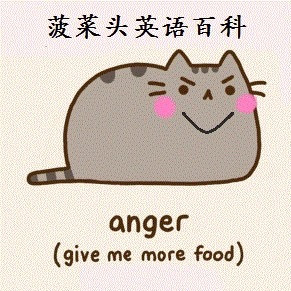
have和there be的区别
4个回答
展开全部
你好,have和there be的区别是:
1、have 和has表示「某人有」或者「某物有」,它的主语在它的前面。如:
I have a friend.我有一个朋友。某人有,主语I 在have 的前面。
The house has two windows.这个房子有两个窗户。某物有,主语house在has的前面。
2、there be表示「有某人」或「有某物」,它的主语在动词be的後面。如:
There is a house over there. 那边有一座房子。本句中, a house才是句子的主语。
也就是说,如果在汉语中,句子没有主语,那就要用there be 结构,而不用have或has.如:
(1)教室里有两个男孩。
本句没有主语,因为「教室」可以做主语,但「教室里」不能做主语,在英语中,「教室里」是一个介词短语in the classroom,介词短语是不能做主语的,因此这句话应该表达为:There are two boys in the classroom.
(2)墙上有一幅画。和上句一样,「墙」可以用作主语,但「墙上」不能用作主语,它是介词短语on the wall,句子应当表达为:There is a picture on the wall.
(3)有一些学生在操场上。这个汉语句子就明显没有主语,而是以「有」开头,这样的句子想都不用想就there be 结构,即:There are some students on the playground.
注意:「Between the two trees stands a boy.」这句话也并不是用介词短语between the two trees 做主语,而是倒装句,它的主语是後面的a boy,正常的语序是:A boy stands between the two trees.
3、have 的第三人称单数形式是has,但如果在疑问句或否定句中有助动词does或doesn’t时,仍然要用have.如:
(1)He has a pen.(他有一支钢笔)
(2)Does he have a pen?(他有一支钢笔吗?有助动词Does)
(3)He doesn’t have a pen. (他没有钢笔,有助动词doesn’t)
4、There be中动词be要根据後面的第一个主语的单复数变化而变化。如:
(1)There are two pens and a book on the desk.(课桌上有两支钢笔和一本书,第一个主语two pens是复数,所以用are)
(2)There is a book and two pens on the desk.(课桌上有一本书和两支钢笔,第一个主语a book是单数,所以用is)
5、千万不要把there和have搭配在一起,这在一般将来时态中和现在完成时态中最容易出错。如:
(1)今天下午我们学校有一场篮球赛。
There is going to have a basketball match in our school this afternoon.
这句错误,is going to 是一个固定搭配,表将来,所以句子变成了there have结构了,当然就错了,正确的表达为:
There is going to be a basketball match in our school this afternoon.
(2)最近五年,我们这个城市有了很多的变化。
There have had great changes in our city in the last five years.
这句也是错误的,其中的have是为了构成现在完成时态而使用的助动词,於是整个句子也变成了 there had 结构,当然错了,正确的表达为:
There have been great changes in our city in the last five years.
1、have 和has表示「某人有」或者「某物有」,它的主语在它的前面。如:
I have a friend.我有一个朋友。某人有,主语I 在have 的前面。
The house has two windows.这个房子有两个窗户。某物有,主语house在has的前面。
2、there be表示「有某人」或「有某物」,它的主语在动词be的後面。如:
There is a house over there. 那边有一座房子。本句中, a house才是句子的主语。
也就是说,如果在汉语中,句子没有主语,那就要用there be 结构,而不用have或has.如:
(1)教室里有两个男孩。
本句没有主语,因为「教室」可以做主语,但「教室里」不能做主语,在英语中,「教室里」是一个介词短语in the classroom,介词短语是不能做主语的,因此这句话应该表达为:There are two boys in the classroom.
(2)墙上有一幅画。和上句一样,「墙」可以用作主语,但「墙上」不能用作主语,它是介词短语on the wall,句子应当表达为:There is a picture on the wall.
(3)有一些学生在操场上。这个汉语句子就明显没有主语,而是以「有」开头,这样的句子想都不用想就there be 结构,即:There are some students on the playground.
注意:「Between the two trees stands a boy.」这句话也并不是用介词短语between the two trees 做主语,而是倒装句,它的主语是後面的a boy,正常的语序是:A boy stands between the two trees.
3、have 的第三人称单数形式是has,但如果在疑问句或否定句中有助动词does或doesn’t时,仍然要用have.如:
(1)He has a pen.(他有一支钢笔)
(2)Does he have a pen?(他有一支钢笔吗?有助动词Does)
(3)He doesn’t have a pen. (他没有钢笔,有助动词doesn’t)
4、There be中动词be要根据後面的第一个主语的单复数变化而变化。如:
(1)There are two pens and a book on the desk.(课桌上有两支钢笔和一本书,第一个主语two pens是复数,所以用are)
(2)There is a book and two pens on the desk.(课桌上有一本书和两支钢笔,第一个主语a book是单数,所以用is)
5、千万不要把there和have搭配在一起,这在一般将来时态中和现在完成时态中最容易出错。如:
(1)今天下午我们学校有一场篮球赛。
There is going to have a basketball match in our school this afternoon.
这句错误,is going to 是一个固定搭配,表将来,所以句子变成了there have结构了,当然就错了,正确的表达为:
There is going to be a basketball match in our school this afternoon.
(2)最近五年,我们这个城市有了很多的变化。
There have had great changes in our city in the last five years.
这句也是错误的,其中的have是为了构成现在完成时态而使用的助动词,於是整个句子也变成了 there had 结构,当然错了,正确的表达为:
There have been great changes in our city in the last five years.
展开全部
一、There be句型
1.表示:在某地有某物或某人。
2.在there be 句型中,主语是单数或不可数名词,be 动词用is ;主语是复数,be 动词用are ;如有几件物品,be 动词根据最近be动词的那个名词决定。
There is a book on the desk. There is some water in the glass.
There are three men under the tree . There is a bag,two books and three pens on the desk.
3.there be句型的否定句在be 动词后加not , 一般疑问句把be动词调到句首。
There is a duck in the river.
否定句:There is not a duck in the river.
一般疑问句:Is there a duck in the river?
4.some 和any 在there be 句型中的运用:some 用于肯定句, any 用于否定句或疑问句。
5.and 和or 在there be句型中的运用:and 用于肯定句, or 用于否定句或疑问句。
6.针对数量提问的特殊疑问句的基本结构是:
How many + 名词复数 + are there + 介词短语?
How much + 不可数名词 + is there + 介词短语?
7.针对主语提问的特殊疑问句的基本结构是:
What’s + 介词短语?
二、have,has
1.表示:某人或某物“拥有”什么东西,强调“所属关系”,而且某人某物作为句子的主语。
2.have用在人称I,we,you,they和复数的人或物后面。has用在人称he, she, it和单数和人或物后面。
I have a daughter. He has a lucky dog.
三、There be句型与have,has有时也可以通用。
如:The classroom has ten desks. = There are ten desks in the classroom. 教室里有十张桌子。
注意:
1.“have + 表示一日三餐的名词”,意为“用餐”。如:have breakfast吃早餐,have lunch吃午饭,have supper吃晚饭。
2.“have + 表示食品、饮料等名词”,意为“吃;喝”。如:have (some) bread吃面包,have eggs (for breakfast) (早餐)吃鸡蛋,have (a cup of) tea 喝(一杯)茶。
3.“have + 表示动作的名词”,没有固定的意思,常与表示动作的名词同义。如:
have a rest 休息一下
have a swim 游泳
have a drink (of...)喝一点(……)
have a look (at ...)(朝……)看一眼
4.“have + 表示某种活动的名词”,意为“进行,举行”。如:
have a class (学生) 上课
have a birthday party 举行生日聚会
1.表示:在某地有某物或某人。
2.在there be 句型中,主语是单数或不可数名词,be 动词用is ;主语是复数,be 动词用are ;如有几件物品,be 动词根据最近be动词的那个名词决定。
There is a book on the desk. There is some water in the glass.
There are three men under the tree . There is a bag,two books and three pens on the desk.
3.there be句型的否定句在be 动词后加not , 一般疑问句把be动词调到句首。
There is a duck in the river.
否定句:There is not a duck in the river.
一般疑问句:Is there a duck in the river?
4.some 和any 在there be 句型中的运用:some 用于肯定句, any 用于否定句或疑问句。
5.and 和or 在there be句型中的运用:and 用于肯定句, or 用于否定句或疑问句。
6.针对数量提问的特殊疑问句的基本结构是:
How many + 名词复数 + are there + 介词短语?
How much + 不可数名词 + is there + 介词短语?
7.针对主语提问的特殊疑问句的基本结构是:
What’s + 介词短语?
二、have,has
1.表示:某人或某物“拥有”什么东西,强调“所属关系”,而且某人某物作为句子的主语。
2.have用在人称I,we,you,they和复数的人或物后面。has用在人称he, she, it和单数和人或物后面。
I have a daughter. He has a lucky dog.
三、There be句型与have,has有时也可以通用。
如:The classroom has ten desks. = There are ten desks in the classroom. 教室里有十张桌子。
注意:
1.“have + 表示一日三餐的名词”,意为“用餐”。如:have breakfast吃早餐,have lunch吃午饭,have supper吃晚饭。
2.“have + 表示食品、饮料等名词”,意为“吃;喝”。如:have (some) bread吃面包,have eggs (for breakfast) (早餐)吃鸡蛋,have (a cup of) tea 喝(一杯)茶。
3.“have + 表示动作的名词”,没有固定的意思,常与表示动作的名词同义。如:
have a rest 休息一下
have a swim 游泳
have a drink (of...)喝一点(……)
have a look (at ...)(朝……)看一眼
4.“have + 表示某种活动的名词”,意为“进行,举行”。如:
have a class (学生) 上课
have a birthday party 举行生日聚会
已赞过
已踩过<
评论
收起
你对这个回答的评价是?
展开全部
一、There be句型
1.表示:在某地有某物或某人。
2.在there be 句型中,主语是单数或不可数名词,be 动词用is ;主语是复数,be 动词用are ;如有几件物品,be 动词根据最近be动词的那个名词决定。
There is a book on the desk. There is some water in the glass.
There are three men under the tree . There is a bag,two books and three pens on the desk.
3.there be句型的否定句在be 动词后加not , 一般疑问句把be动词调到句首。
There is a duck in the river.
否定句:There is not a duck in the river.
一般疑问句:Is there a duck in
1.表示:在某地有某物或某人。
2.在there be 句型中,主语是单数或不可数名词,be 动词用is ;主语是复数,be 动词用are ;如有几件物品,be 动词根据最近be动词的那个名词决定。
There is a book on the desk. There is some water in the glass.
There are three men under the tree . There is a bag,two books and three pens on the desk.
3.there be句型的否定句在be 动词后加not , 一般疑问句把be动词调到句首。
There is a duck in the river.
否定句:There is not a duck in the river.
一般疑问句:Is there a duck in
已赞过
已踩过<
评论
收起
你对这个回答的评价是?
展开全部
have某人有 主语十have…
I have a book.
there be某地有某物
there be 十 某物十 某地
There is a book in the desk.
I have a book.
there be某地有某物
there be 十 某物十 某地
There is a book in the desk.
已赞过
已踩过<
评论
收起
你对这个回答的评价是?
更多回答(2)
推荐律师服务:
若未解决您的问题,请您详细描述您的问题,通过百度律临进行免费专业咨询
|
广告 您可能关注的内容 |



